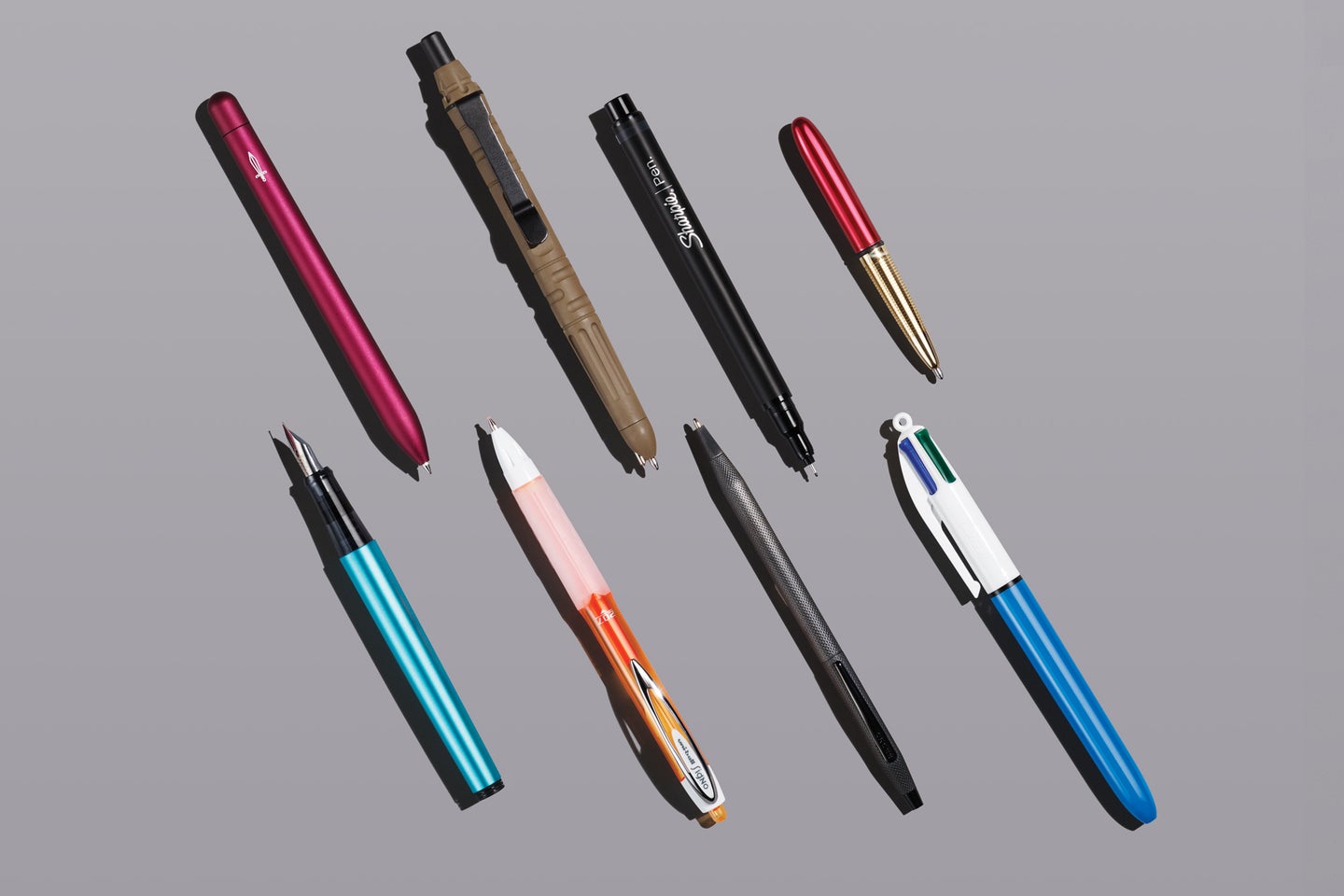Eight great pens to match your writing style
Take a break from typing and pick up one of these excellent implements.

We may earn revenue from the products available on this page and participate in affiliate programs. Learn more ›
You type all day, but a good pen offers a connection to the written word that your keyboard lacks. These eight have you covered for various tasks.
For every day
The recyclable aluminum body of the Baronfig Squire Rollerball is thicker toward its point, which helps you grip it comfortably. The water-based ink it deploys flows easily for consistent handwritten lines.
For emergencies
The steel Gerber Impromptu Tactical Pen has two tips: a retractable ballpoint for scribbling and a spike for shattering the windshield of your car so you can escape. At an eighth of a pound, it’s heavy.
For labels
Each Sharpie Fine Point uses a 0.8-millimeter-wide plastic tip to dispense a water-based ink designed to not seep through paper’s tiny pores. That means clean hands and surfaces when you’re done.
For odd angles
A brass cartridge inside the Fisher Space Pen contains both ink and pressurized nitrogen gas so NASA astronauts can write in space. Here on Earth, that same feature lets you jot notes while you’re upside down.
For old-time script
There are no moving parts in the Pilot Explorer’s 0.75-inch-long stainless-steel nib. That allows this affordable fountain pen to glide easily across the page as ink issues forth from its replaceable cartridge.
For the record
Ink inside the uni-ball 207 contains large pigment particles in viscous gel. The smooth-flowing liquid binds with paper and is resistant to both water and light, so it’ll stay bold for a long time.
For a gift
Twist the upper portion of the 0.6-inch-wide Cross Classic Century to reveal its replaceable ballpoint tip. Its sleek and durable coated brass barrel will endure years of abuse in a pocket or bag.
For color-coded lists
The plastic body of the Bic 4-Color Ballpoint houses four shafts, each one a different hue and deployed by its own lever. If this gadget feels like the stuff of childhood, that’s because it’s been around since 1970.
This story appears in the Spring 2020, Origins issue of Popular Science.
